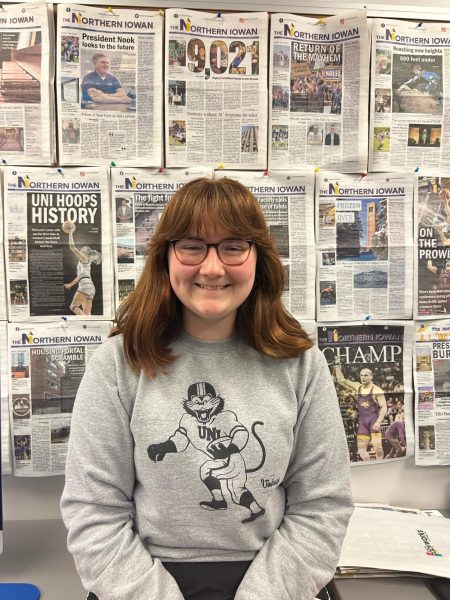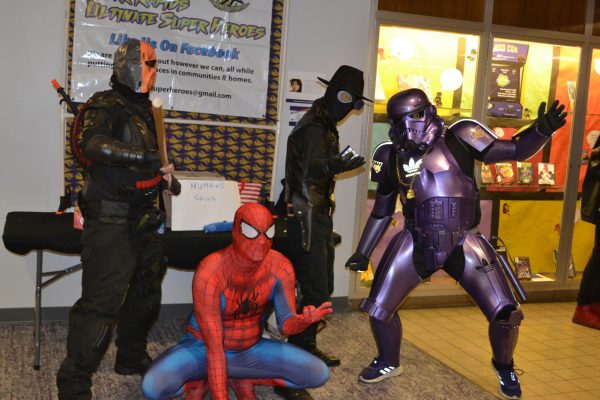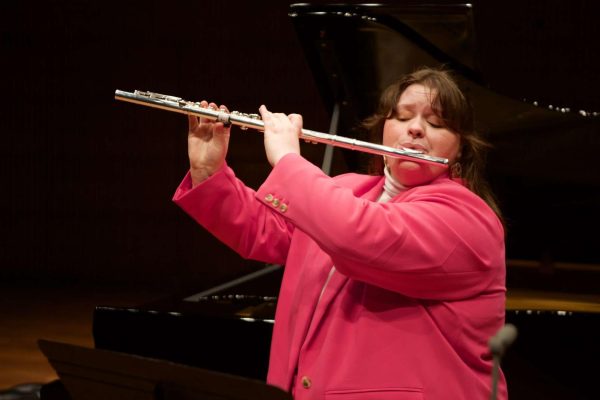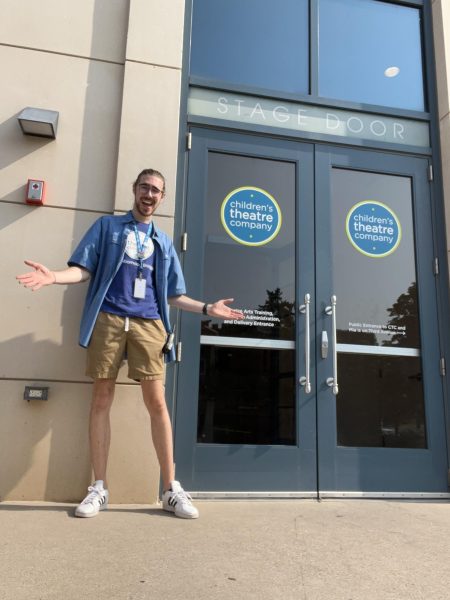“Glass Menagerie” recreated at UNI
Mar 3, 2016
What I love the most about theatre is the collaboration that occurs; there are always moving pieces working throughout a single production.
As a playwright myself, I know what I want out of one of my scripts, but a director or an actor may misinterpret in the text. This is the collaboration, and it only grows in meaning and depth the longer the script is in circulation. This is expertly shown in TheatreUNI’s production of “The Glass Menagerie.”
The play is considered a classic of American theatre and one of playwright Tennessee Williams’s masterworks. As with many of Williams’s plays, it is considered to be modeled after his own life. The play follows the Wingfield family as they navigate through their own personal problems and shortcomings. It follows the mother’s attempts to find her daughter a husband and the son’s eventual leaving of the family.
The mother, Amanda, played by Michelle Rathe, is the classic fading Southern Belle with unrealistic standards that she holds herself and her children to.
Her son, Tom, played by Andrew Richman, is rebellious, witty, a budding alcoholic and closeted. He is fed up with being the primary breadwinner for his family and resolves to leave them to find adventure.
The daughter, Laura, played by Erika Kuhn, is shy, introverted, physically disabled and lives in her own world, polishing her small glass figurines. The patriarch of the Wingfield family has abandoned them for the road.
The character of Old Tom, played by Alan Malone, is Tom as an adult, years after the events of the play and serves as the narrator. This character is often not separate from that of Tom in the past. This is an example of different interpretations of the text.
The set is constructed to resemble the seedy underbelly of St. Louis, in which the play is set. It is stated early on that this is a memory play; it lives within the mind of Tom and his recollections, which also accounts for the set.
Large, window-like pieces of transparent plastic sheets serve as the walls. There were also two large screens hanging above the stage, which presented pieces of film from the 1930’s, which I felt was unneeded because the rest of the play clearly indicated that it was set in the 30’s.
Something I did enjoy about the set was the rather large portrait of the father who no longer lives at home.
The actors’ performances were noble. Kuhn’s performance as Laura proved to be heartbreaking as the audience member knows that her situation will probably never get better for her.
Rathe turned in an oddly sympathetic performance as Amanda. In the text, it’s easy to see Amanda as being manipulative and cruel towards her children, but Rathe makes her relatable. She is simply a woman who has been let down, clinging to what she knows best, even if that is obsolete.
As the younger version of Tom, Richman shows us a man who is too headstrong and ambitious to stay with his family; he has to strike out on his own. Malone also gives a solid performance as Old Tom.
At the climax of the story, he stands directly behind the portrait of the father and his own face can be seen through the painting, which is a very powerful image. He only comes down from his perch at the end of the play to voice his regret in leaving but stating that he had to for his own sake.
What is most striking about the acting in this show is the chemistry between the cast and their role in the seamless flow of the play. The first act felt as though it took 20 minutes to perform. This is the mark of good acting.
There has to have been at least 1,000 different productions of this play, each with its own flair and feeling to it. This one is no different.
That’s what I love about theatre; that there can be thousands of different reactions to one piece. That is the essence of art and this show is a shining example of that.
















